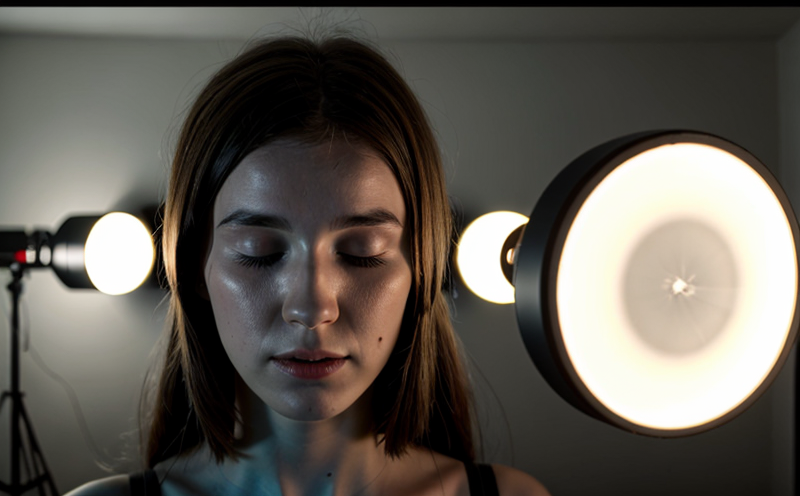EN 55015 Flicker and Emission Testing of Lighting Systems
The CENELEC standard EN 55015 specifies the limits, measurement methods, and acceptance criteria for electromagnetic compatibility (EMC) emissions in lighting systems. This standard is crucial for ensuring that electronic devices, including lighting fixtures, do not generate excessive interference with other electrical equipment. The flicker test under this standard evaluates whether a light source emits an unacceptable amount of flickering, which can cause discomfort to human eyes and may lead to potential safety issues.
The EN 55015 standard applies particularly to white-light sources (such as LEDs) that are used for general lighting purposes. Flicker is often more pronounced in these devices due to their high-frequency modulation of light intensity, making compliance with this standard essential for product development and quality assurance. The test aims to ensure the light source does not exceed specified flicker limits, which can be measured using a photometer.
The testing process involves generating a waveform that simulates real-world conditions under which a lighting device might operate. This includes varying load conditions on the power supply, ambient temperature changes, and other factors that could influence the performance of the light source. The test setup typically consists of a flicker measurement system capable of capturing the intensity variations over time.
During testing, the light source is subjected to different operational scenarios to assess its behavior under various conditions. These scenarios include typical usage patterns such as switching on and off cycles, dimming operations, and continuous operation at full brightness. The data collected from these tests are then compared against predefined thresholds outlined in the standard.
The results of EN 55015 testing play a critical role in ensuring that lighting products meet regulatory requirements before they reach the market. Compliance with this standard helps manufacturers avoid potential recalls and legal challenges associated with non-compliant products. Additionally, meeting these standards enhances brand reputation by demonstrating commitment to quality and safety.
For R&D engineers working on new lighting technologies, understanding EN 55015 is vital as it guides the design process from concept through to production. By incorporating compliance considerations early in development, manufacturers can streamline their certification processes and minimize costs associated with late-stage modifications.
In summary, adhering to EN 55015 ensures that lighting systems perform reliably without causing nuisance flicker or other forms of electromagnetic interference. This standard not only protects consumers but also supports the industry by promoting consistent quality standards across different markets.
Applied Standards
| Standard Number | Description |
|---|---|
| EN 55015-1:2018 | Flicker and non-flicker emission limits for all types of lighting equipment. |
| EN 55015-2:2019 | Emission limits for radio interference characteristics, including measurement procedures. |
| Measurement Parameters | Description |
|---|---|
| Flicker Index (FI) | A quantitative measure of the perceived flicker effect on human vision. |
| Maximum Flicker Frequency (MFF) | The highest frequency at which flickering occurs within a specified range. |
International Acceptance and Recognition
- EN 55015 is widely adopted in Europe, ensuring consistent EMC performance across national boundaries.
- The standard has gained acceptance among global lighting manufacturers due to its rigorous testing protocols.
- Many countries outside of the EU have also referenced or adapted parts of EN 55015 into their own national standards.
Use Cases and Application Examples
The application of EN 55015 is broad, encompassing various types of lighting systems such as LED lamps, street lights, and architectural fixtures. Here are some specific use cases:
- LED Lighting Fixtures: Ensuring that the rapid switching of LEDs does not cause visible flicker.
- Sporting Venues: Preventing potential safety hazards by minimizing flicker during critical moments in events.
- Healthcare Facilities: Reducing patient discomfort by maintaining stable lighting conditions.
- Public Spaces: Enhancing the aesthetic experience of urban environments while ensuring compliance with local regulations.
The standard is particularly important for applications where visual clarity and comfort are paramount, such as in offices, schools, hospitals, and public transportation systems. By adhering to EN 55015, lighting manufacturers can ensure their products meet the highest standards of quality and reliability.





